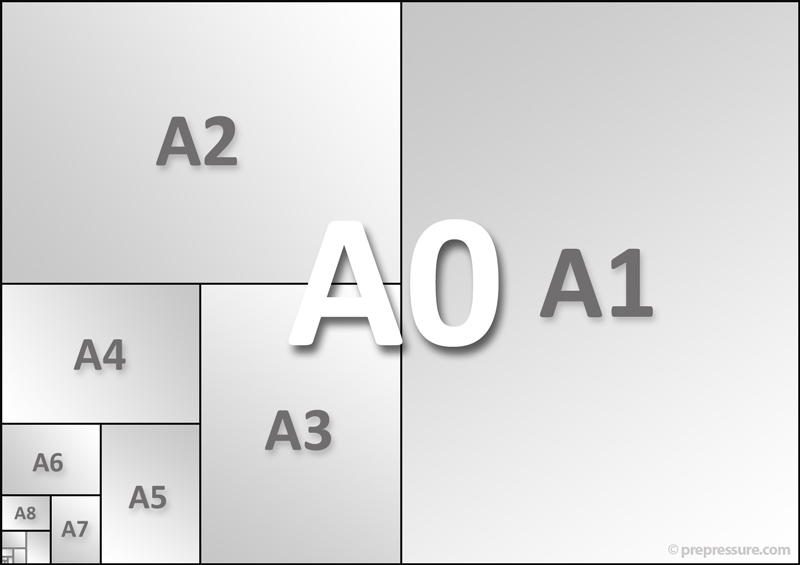A0 is a paper size that is typically used for technical drawings and posters.
Dimensions
A0 measures 841 × 1189 millimeters or 33.11 × 46.81 inches. In PostScript, its dimensions are rounded off to 2384 × 3370 points.
Part of the ISO 216 standard
A0 is part of a set or range of page sizes, called the ISO A or ISO 216 standard. This international standard is based on the German DIN 476 standard from 1922. A0 is actually often referred to as DIN A0. The Japanese have adopted the same range of paper sizes in their JIS P 0138-61 standard.
By folding an A0 in two along its shortest side, you create an A1 document. Fold once more and you get an A2 sized document. This way a range of paper sizes is created from A0 (which has a surface of one square meter) to A10. The height/width ratio remains constant for all sizes: 1:1.41 or the square root of 2. The dimensions always get rounded to the nearest millimeter.
Resolution needed to print an A0 size picture
To output an image properly it needs to have a certain minimum resolution. The number of pixels depends on the required output quality.
- At 300 ppi (pixels per inch) the image needs to be 9933 x 14043 pixels. This is the required resolution for quality offset printing that will be viewed from a short distance (such as books, brochures, magazines, calendars,…). For photos, it is also the optimum resolution but a somewhat lower pixel count (200 to 220 dpi) is acceptable for great-looking photographs.
- At 150 ppi the image needs to be 4967 x 7022 pixels. This is the minimum resolution for newspapers or posters viewed from a fairly short distance.
A digital camera with decent image quality and a resolution of 24 megapixels or more can be used to print high-quality A0 size pictures. Since such posters are usually viewed from a larger distance a 20-megapixel camera will still offer excellent quality and 16 megapixels will be considered good by most people.
Alternatives
The American alternative to A0 is the ANSI E-size, which is part of the ANSI/ASME Y14.1 standard. It measures 864 × 1118 mm or 34 × 44″.
Other sources of information
An elaborate yet easy to read page on the ISO 216 standard can be found here.

You did not mention the basic definition for A0 which is that it is a rectangle with an area of 1sqm proportioned such the ratio of length to breadth is the same proportion of breadth to half the length 🙂
Bookmarked
Thanks for the info
Millimeters and centimeters are more precise which is why they should be the standard. And they are easily divisible. Fractions are for cake!
I think most people prefer to hear this in inches as mm sounds too daunting.
The US, Myanmar and Liberia are the only countries that still use imperial. I think most people (ie all of the rest of the world), would prefer it in mm actually.
OH MY GOOD ARE THOSE MILIMETERS, I’M LITERALLY GOING INSANE AAAAAAAAAAAAAA THIS IS COMMUNISM!!!!
Thanks this was a useful quick find. Then there is the debate about legal A4 size which is slightly different again. We scan small to large sizes quite often but its difficult when people use both inches and cm as example measurements. One system should be enough!
I don’t think there is such as beast as ‘legal A4’.